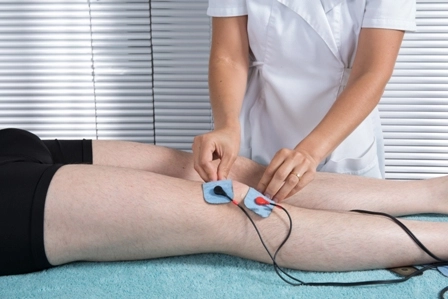Know the Specifics When Coding H-Wave Studies

Keep Stark laws in mind when the physician dispenses the device.
The differences between 'H' Wave stimulation and 'F' Wave studies are more vast than just the letters of the alphabet.
Following our reader question on this topic in the Insider's vol. 13, no. 31, we received several follow-up questions about reporting H-wave stimulation. Following are the expert answers to these queries, from Jean Acevedo, LHRM, CPC, CHC, CENTC of Acevedo Consulting, Inc. in Delray Beach, Fla:
Tip 1: G0283 Isn't A Standalone Code. You'll never report G0283 (Electrical stimulation [unattended], to one or more areas for indication[s] other than wound care, as part of a therapy plan of care) for H-wave stimulation unless a plan is already in place for it, Acevedo says. "G0283 is an 'always therapy' code," she explains. "This means it can only be billed to Medicare (and payers following CMS guidelines) when it is provided pursuant to a physical therapy plan of treatment."
Tip 2: Prescribing Differs From Providing. Some physicians prescribe H-wave therapy (and put it into a plan of care that a therapist will implement), while other physicians provide the service directly--and you should differentiate between the two before selecting a code. Specific circumstances must be met to code this service, and payers differ on the regulations.
For example, some insurers prefer that physicians use 97014 (Unattended electrical stimulation) instead. Blue Cross/Blue Shield of Kansas has a policy that states, "When used by a physician, physiatrist, podiatrist, or chiropractor, H-wave stimulation may be billed by using CPT® code 97014. This is a nonspecific CPT® code and thus does not distinguish H-wave stimulation from other forms of electrical stimulation. However, when electrical stimulation is prescribed for use in the home, rental or purchase of H-wave devices may be identified by use of the HCPCS code E0745 (Neuromuscular stimulator, electronic shock unit)."
Tip 3: Keep Stark Self-Referral Law at Top of Mind. Code E0745falls under the category of durable medical equipment (DME), Acevedo says. "The Stark law enters into the picture as DME is a Designated Health Service. And, for a physician to be able to bill for DME, the item must be applied personally by the physician in the office suite and/or be required for the patient to be able to leave the office (the latter requirement is what allows a doctor to dispense crutches, for example)."
Therefore, to stay compliant with Stark, you do not want to simply dispense the device to the patient. In addition, some states have developed their own versions of the Stark Law and some of these are more stringent than the federal law, so consult an attorney before dispensing any DME products to ensure that you stay on the right side of the law.

